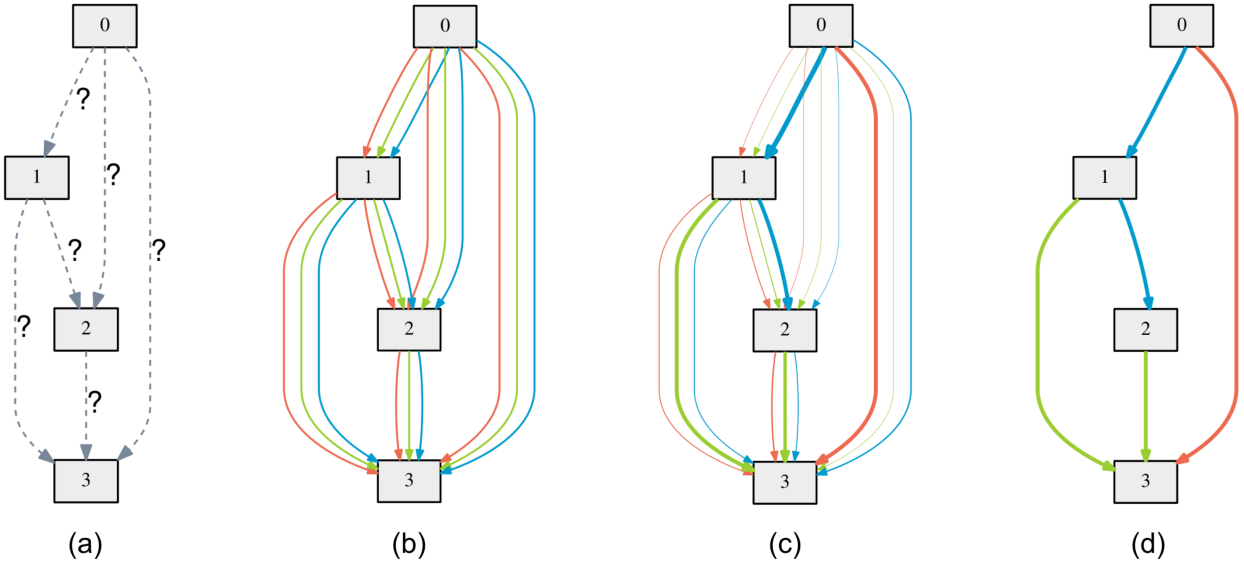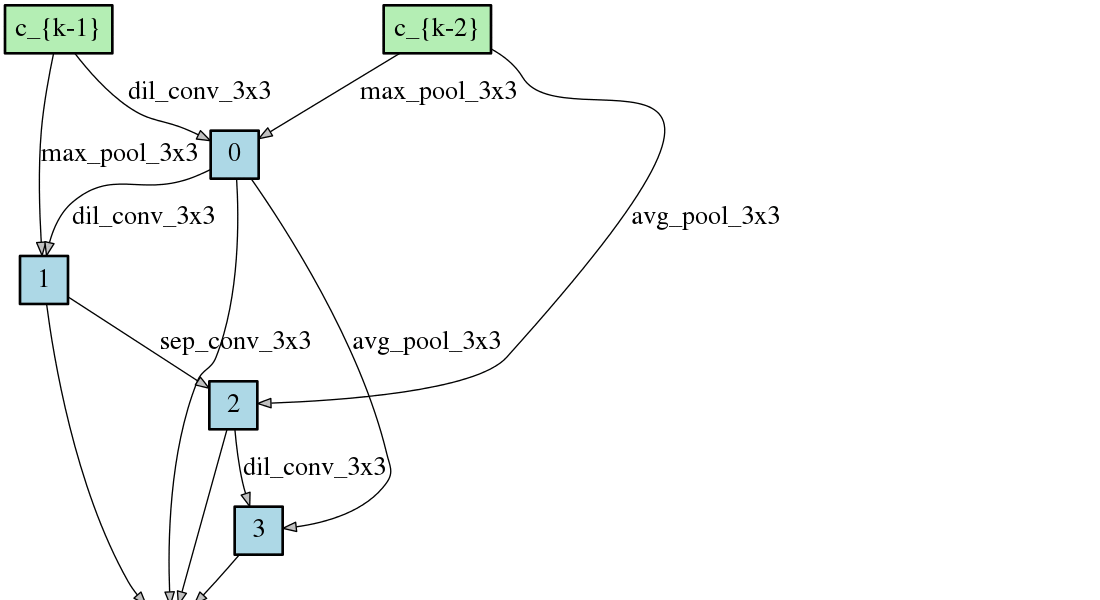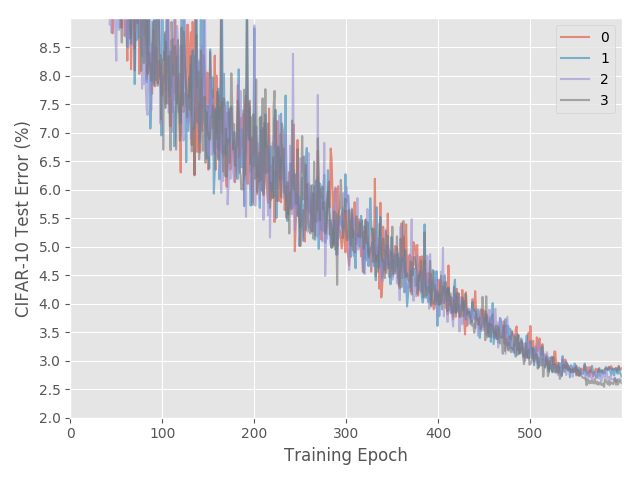Code accompanying the paper
The algorithm is based on continuous relaxation and gradient descent in the architecture space. It is able to efficiently design high-performance convolutional architectures for image classification (on CIFAR-10 and ImageNet) and recurrent architectures for language modeling (on Penn Treebank and WikiText-2). Only a single GPU is required.DARTS: Differentiable Architecture Search
Hanxiao Liu, Karen Simonyan, Yiming Yang.
arXiv:1806.09055.
Python >= 3.5.5, PyTorch == 0.3.1, torchvision == 0.2.0
NOTE: PyTorch 0.4 is not supported at this moment and would lead to OOM.
Instructions for acquiring PTB and WT2 can be found here. While CIFAR-10 can be automatically downloaded by torchvision, ImageNet needs to be manually downloaded (preferably to a SSD) following the instructions here.
To carry out architecture search using 1st-order approximation, run
cd cnn && python train_search.py # for conv cells on CIFAR-10
cd rnn && python train_search.py # for recurrent cells on PTB
2nd-order approximation can be enabled by adding the --unrolled flag.
Snapshots of the most likely convolutional & recurrent cells over time:
To evaluate our best cells, run
cd cnn && python train.py --auxiliary --cutout # CIFAR-10
cd rnn && python train.py # PTB
cd rnn && python train.py --data ../data/wikitext-2 \ # WT2
--dropouth 0.15 --emsize 700 --nhidlast 700 --nhid 700 --wdecay 5e-7
cd cnn && python train_imagenet.py --auxiliary # ImageNet
Customized architectures are supported through the --arch flag once specified in genotypes.py.
Expected performance on CIFAR-10 (4 runs) and PTB:
Package graphviz is required to visualize the learned cells
python visualize.py DARTS
where DARTS can be replaced by any customized architectures in genotypes.py.
If you use any part of this code in your research, please cite our paper:
@article{liu2018darts,
title={DARTS: Differentiable Architecture Search},
author={Liu, Hanxiao and Simonyan, Karen and Yang, Yiming},
journal={arXiv preprint arXiv:1806.09055},
year={2018}
}




